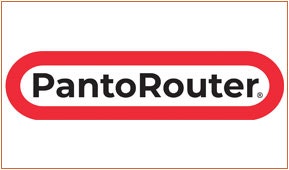Woodworking Tips for Project Planning
5 Steps for Planning Your Woodworking Project
Before tackling your woodwork, it is important to visualize each step to ensure you get the result you are aiming for. Here are 5 steps to help you design your project from woodworking tools to finish.
Step 1: Always start with function
What is the function of your wood piece? For instance, if this project is a cabinet, what will the cabinet be storing and what visual effect do you want it to have?
If it is a table, how many people do you need to sit and what type of visual effect do you want it to have in its setting?
It seems simple; however, if you don’t pay attention to this stage of the process, ultimately the end product will only become more diluted and less defined as you progress.
Now that you have an idea of the general direction you want to move in, based on sketches of course.
Step 2: What type of materials will you need?
Is this a ‘solid wood’ project or a ‘veneer over substrate’ type of project? Most projects are a combination of the two, however I recommend defining this upfront.
If a project is mostly built from veneers over substrates, the tools, cutters, processing techniques, and waste calculations that are required are quite different than if the project is made from mostly solid wood.
Now, you have defined the general nature of your project.
Step 3: Plan the tools and cutters that you will need
This will take some thought as well as quite a few thumbnail drawings to determine what type of router bits, shaper cutters, and other tooling will be necessary to complete your project according to your design.
For instance, draw out how a table leg will intersect with the table rail. Visualize how you will make the cuts that you need with the tools that you have. If, during this process, you find that you do not have a specific cutter, router bit, or saw blade, this is the time to investigate your different options.
At this stage, you can still change your design if a specific tool is not available or too expensive.
Finding the specific tools that you’ll need as you design your project will go a long way in saving time and money later, as well as unwanted frustration in trying to find a specific tool that may or may not exist to fit a poorly thought-out design.
Step 4: Develop and redevelop your thumbnails
As you progress on your project, it is inevitable that you will come across things that your original plans did not foresee.
When this happens, you don’t have to go back to the drawing board, per se, but you will need to modify your drawings somewhat and probably have to add a few to further clarify in your mind the affected part of the project.
These adjustments to your planning shouldn’t require new tooling, but most likely just different depths of cut or slightly changed parameters having to do with fine tuning a fit between one project piece and another.
Step 5: Establish the glues, fillers, and finishes you will need
This step does not need to be drawn out like the others, however, they do need to be researched thoroughly on the internet or through other reliable resources to ensure that what you have suitable for your material and for your piece.
I explained in the last article some of the differences between glues and gap-fillers, for your reference.
Finishes can be anything from hand applied oil, brush applied varnishes, or spayed on lacquer and each has its own specific properties for application ease and durability in varying conditions.
Coloration can also be applied using dyes and stains and these variants also have their own properties for durability.
One last thing…
I know we have already covered 5 steps, but there is one more thing to consider. Actually, it is more of a “post-step”.
When a project is completed, always note the difficulties in the process for the next time. Keep a notebook with your thumbnails and notes in it to refer back to.
This way, when you begin your next design, all of your prior knowledge will be available to you at the flip of a page.
After all, each project that you create is a different set of design functions and visual effects, so each project will have its own unique areas to learn from, as well as areas that overlap on other projects and the more projects you create, the broader your knowledge base will become.
Above all, have fun with your projects and the process. Learning from your mistakes and implementing your knew found knowledge into the next project is what growing as a woodworker is all about.















